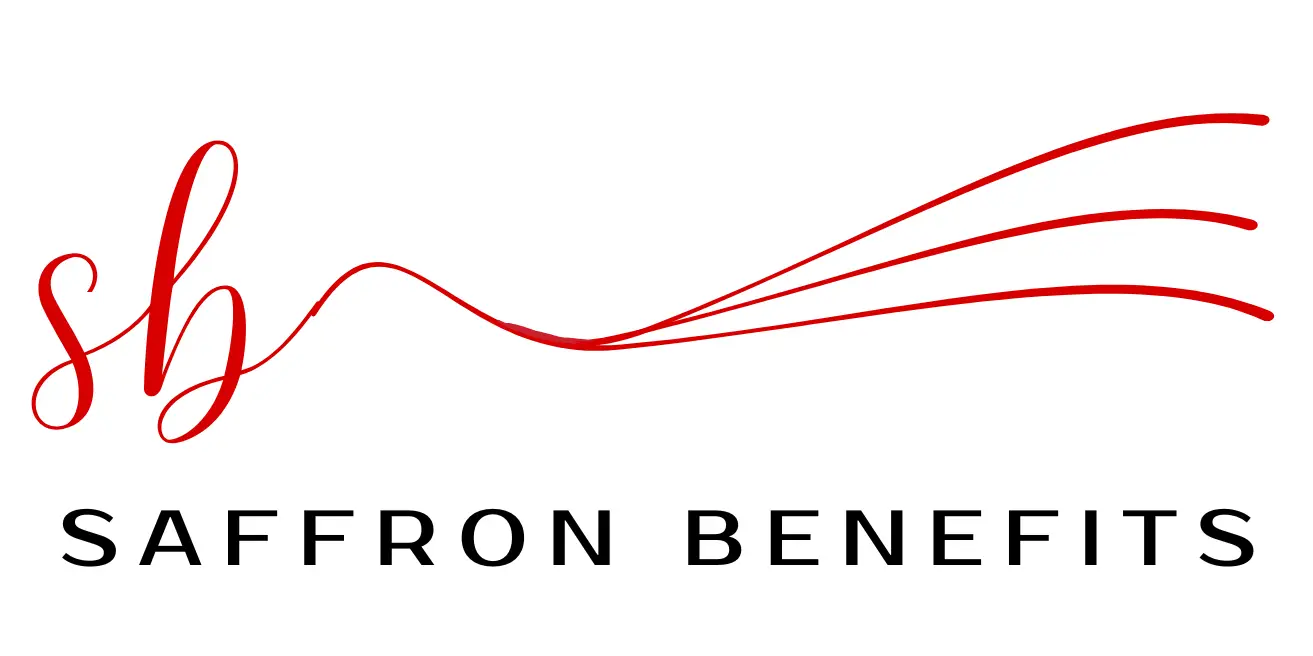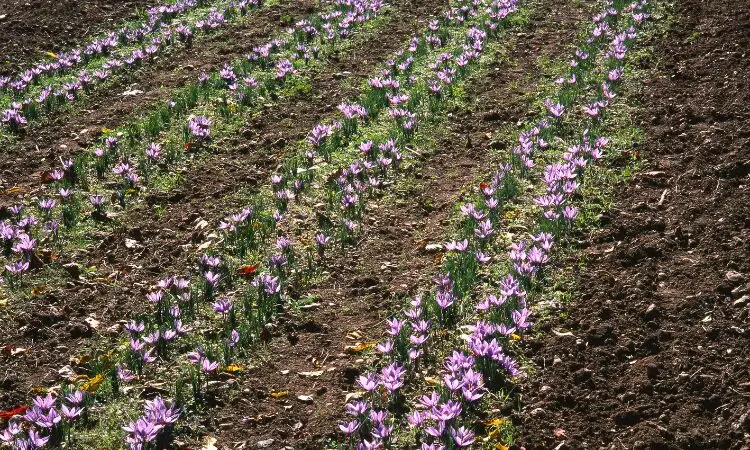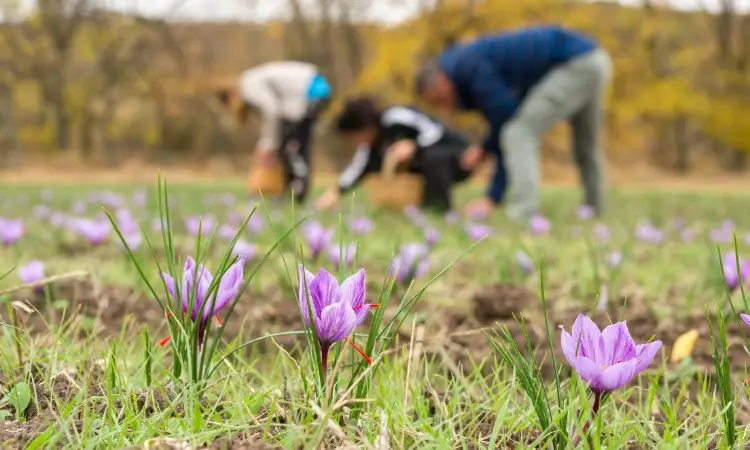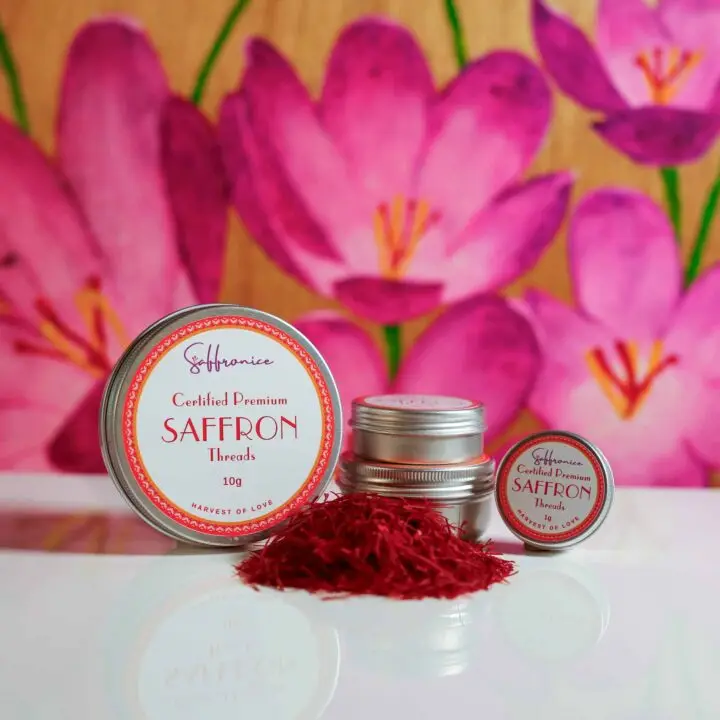In the ever-evolving agricultural landscape, saffron farming has emerged as a lucrative and promising venture for savvy investors. As the world’s most expensive spice, saffron has captivated the global market, driven by its unique flavor, aroma, and extensive applications in culinary, medicinal, and cosmetic industries. This comprehensive guide delves into the nuances of saffron farming profitability, equipping you with the knowledge and insights to make informed decisions about venturing into this high-value crop.
The global saffron market has witnessed steady demand growth, fueled by increasing appreciation for natural and organic products, as well as the spice’s versatility. As a result, saffron farming has become an increasingly attractive investment opportunity for both seasoned agriculturists and aspiring entrepreneurs alike. This guide explores key factors contributing to profitability in saffron cultivation, empowering you to navigate the path toward a successful and rewarding enterprise.
🔑 Key Takeaways:
- Saffron farming offers significant profit potential due to high global demand and premium pricing.
- Understanding global market dynamics—including size, key consuming countries, and price trends—is crucial.l
- Mastering essential requirements for starting a saffron farm ensures a thriving operation.ns
- Analyzing financial aspects, including investment, costs, and ret, is critical for profitability evalu.ation
- Adopting best practices in cultivation, harvesting, and post-harvest management maximizes yields and quality.

Understanding the Global Saffron Market Potential
The saffron industry has garnered growing global interest as the world recognizes this precious spice’s unique value and versatility. Understanding current market size, growth projections, and key consuming countries provides comprehensive insight into the industry’s tremendous potential.
Current Market Size and Growth Projections
The global saffron market is currently estimated at approximately $1.5 billion, with a projected compound annual growth rate (CAGR) of 6-8% over the next five years. This steady growth stems from increasing demand across various industries, including culinary, cosmetics, and pharmaceuticals. Market trends indicate sustained expansion driven by premiumization and growing consumer awareness of saffron’s benefits.
Growth Drivers:
- Rising demand for natural, organic products
- Increasing application in the pharmaceutical and cosmetic industries
- Growing appreciation for gourmet and specialty ingredients
- Expanding middle-class populations in emerging markets
- Health-conscious consumer trends favoring natural remedies
Key Saffron-Consuming Countries
Iran: The world’s largest producer and exporter, accounting for approximately 90% of global production. Iranian saffron dominates international markets, setting quality benchmarks and price standards.
India: A major consumer and importer with growing demand for saffron in diverse cuisine and traditional medicine practices. Kashmir produces high-quality saffron, commanding premium prices.
European Union: Significant consumer market with countries like Spain, Italy, and France driving demand through strong culinary traditions and appreciation for premium ingredients.
United States: An emerging market with growing appreciation for saffron’s unique flavors and potential health benefits. American consumers increasingly seek authentic, high-quality saffron for culinary and wellness applications.
Price Trends and Market Dynamics
Saffron prices demonstrate volatility, fluctuating based on supply and demand, weather conditions, and geopolitical events. Average global prices range from $1,000 to $5,000 per kilogram, depending on quality and origin. Understanding these dynamics is crucial for producers and exporters navigating international markets. Export statistics reveal patterns that inform strategic business decisions.
| Country | Production (tonnes/year) | Consumption (tonnes/year) | Market Position |
|---|---|---|---|
| Iran | 300 | 180 | Dominant producer/exporter |
| India | 10 | 20 | Net importer, growing demand |
| Spain | 5 | 10 | Premium producer, strong domestic market |
| Italy | 3 | 8 | High-value consumer market |
| United States | 2 | 5 | Emerging producer, growing consumer base |
Essential Requirements for Starting a Saffron Farm
Venturing into saffron cultivation requires a comprehensive understanding of essential requirements. From climate conditions to specialized equipment, establishing a successful saffron farm demands meticulous planning and preparation.
Climate and Environmental Conditions
Climate requirements for saffron farming are specific but achievable in suitable regions. Saffron thrives in Mediterranean-like conditions, characterized by warm, dry summers and cool, rainy winters.
Optimal Climate Parameters:
- Temperature range: 15°C to 25°C during growing season
- Cold requirement: Minimum 1,000 hours below 10°C during winter dormancy
- Precipitation: 300-400mm annually, concentrated in autumn and spring
- Sunshine: Abundant sunlight during growing and flowering periods
- Frost tolerance: Can withstand moderate frost during dormancy
Soil Requirements and Preparation
Soil composition critically affects saffron success. The plant prefers well-drained, nutrient-rich soils with slightly alkaline pH.
Ideal Soil Characteristics:
- Type: Sandy loams, clay loams, or chalky soils
- pH level: 6.0 to 8.0 (slightly acidic to slightly alkaline)
- Drainage: Excellent drainage prevents corm rot
- Organic matter: 2-3% for optimal nutrition
- Depth: Minimum 30cm for proper root development
Soil Preparation Steps:
- Deep plowing to 25-30cm depth
- Incorporation of well-rotted organic matter
- pH adjustment, if needed, using lime or sulfur
- Removal of stones and debris
- Final leveling for uniform water distribution
Irrigation and Water Management
While saffron requires moderate water, proper irrigation management is essential, especially during flowering and harvesting seasons. Strategic water application prevents both drought stress and waterlogging.
Irrigation Strategy:
- Pre-planting: Adequate soil moisture for corm establishment
- Growing season: Regular irrigation, maintaining consistent moisture
- Flowering period: Careful water management to avoid flower damage
- Post-harvest: Reduced irrigation as plants enter dormancy
- Method: Drip irrigation is preferred for efficiency and disease prevention
Equipment and Infrastructure
Farm equipment represents a significant initial investment but proves essential for efficient operations.
Essential Equipment:
- Soil preparation machinery (plows, harrows, cultivators)
- Irrigation system components (pipes, emitters, controllers)
- Harvesting tools (baskets, knives, collection containers)
- Processing equipment (drying racks, dehumidifiers, storage containers)
- Grading and quality control tools
- Temperature and humidity monitoring systems
| Requirement Category | Optimal Condition | Critical Success Factor |
|---|---|---|
| Climate | Mediterranean-like with defined seasons | Essential for flower initiation |
| Temperature | 15-25°C growing, 1000+ hours below 10°C winter | Determines flowering success |
| Soil Type | Well-drained, pH 6.0-8.0 | Prevents disease and optimizes nutrition |
| Irrigation | Consistent access, especially during flowering | Critical for yield and quality |
| Equipment | Specialized cultivation and processing tools | Efficiency and product quality |
Analyzing Saffron Farming Profitability
Understanding financial aspects is crucial for prospective investors. This analysis covers initial investment, operating costs, and expected returns to provide a comprehensive profitability assessment.
Initial Investment Breakdown
Starting a saffron farm requires upfront investment in land, infrastructure, and equipment. Initial costs vary depending on scale, location, and local market conditions.
Capital Requirements:
- Land: Purchase or long-term lease (varies significantly by region)
- Corm procurement: $15,000-$25,000 per hectare for quality corms
- Irrigation system: $3,000-$8,000 per hectare, depending on complexity
- Infrastructure: Storage facilities, processing area, fencing
- Equipment: $5,000-$15,000 for basic machinery and tools
- Working capital: Operating expenses for the first 2-3 years until full production
Total Initial Investment Range: $30,000-$60,000 per hectare for comprehensive setup.
Operating Costs Analysis
Ongoing operating expenses significantly impact profitability and require careful budgeting.
Annual Operating Costs (per hectare):
- Labor: $8,000-$15,000 (planting, maintenance, harvesting, processing)
- Irrigation: $1,000-$2,500 (water, electricity, system maintenance)
- Fertilizers and amendments: $1,500-$3,000
- Pest and disease management: $500-$1,500
- Utilities: $500-$1,000
- Transportation and logistics: $1,000-$2,000
- Certification and compliance: $500-$1,500
Total Annual Operating Costs: $13,000-$26,500 per hectare.
Expected Return on Investment
Potential ROI in saffron production can be substantial, though several factors impact overall profitability.
Revenue Projections:
- Yield: 4-8 kg dried saffron per hectare (mature plantation)
- Price: $2,000-$5,000 per kilogram (depending on quality and market)
- Gross revenue: $8,000-$40,000 per hectare annually
- Net profit: $-5,000 to $25,000 per hectare (after operating costs)
- Break-even: Typically 3-4 years after establishment
| Profitability Factor | Impact on ROI | Optimization Strategy |
|---|---|---|
| Yield per hectare | Direct revenue correlation | Implement best practices, optimal corm density |
| Market prices | Significant profit impact | Target premium markets, quality certification |
| Production efficiency | Controls cost margins | Mechanize where possible, skilled labor |
| Premium market access | Higher revenue per kg | Develop brand, pursue certifications |
Investment Timeline:
- Year 1: Establishment costs, minimal production
- Year 2: Increased yield (30-40% of potential)
- Year 3: Near-full production (70-80% of potential)
- Year 4+: Maximum productivity, optimal profitability
Best Practices for Saffron Cultivation
Successful saffron cultivation requires meticulous attention to detail and implementation of proven techniques that maximize yield and quality.
Corm Selection and Planting
High-quality corm selection forms the foundation of successful saffron farming.
Quality Indicators:
- Size: 8-10 grams or larger for optimal performance
- Appearance: Firm, healthy, free from disease or damage
- Origin: Reputable suppliers with verified genetics
- Viability: Fresh corms (avoid storage beyond one season)
Planting Guidelines:
- Timing: Late summer (July-August in the Northern Hemisphere)
- Depth: 10-15cm deep
- Spacing: 10cm between corms, 20-25cm between rows
- Density: 60-80 corms per square meter
- Orientation: Growing points facing upward
Soil and Nutrient Management
Proper soil preparation and fertility management ensure vigorous growth.
Fertility Program:
- Pre-planting: Incorporate 20-30 tonnes/hectare well-rotted manure
- Growing season: Balanced NPK fertilizer based on soil tests
- Micronutrients: Zinc, boron, and iron as needed
- Organic matter: Annual top-dressing to maintain soil structure
- pH monitoring: Annual testing with adjustments as required
Crop Rotation and Field Management
Long-term productivity depends on proper crop rotation, preventing disease buildup, and maintaining soil health.
Rotation Strategy:
- Saffron cultivation: 4-6 years in the same location
- Fallow period: Minimum 8-10 years before replanting
- Rotation crops: Legumes, cereals, or vegetables during fallow
- Field selection: Avoid fields with a history of soilborne diseases
| Best Practice | Implementation | Expected Benefit |
|---|---|---|
| Quality corm selection | Source from reputable suppliers, inspect thoroughly | Consistent high yields |
| Optimal soil preparation | Deep plowing, organic matter incorporation | Strong root development |
| Proper planting density | 60-80 corms per square meter | Maximum productivity per unit area |
| Crop rotation | 4-6 year cultivation, 8-10 year fallow | Disease prevention, soil health |
Harvesting and Post-Harvest Management
Proper harvesting techniques and post-harvest handling critically affect final product quality and market value.
Optimal Harvesting Techniques
Saffron harvest occurs during a brief 2-3 week window in autumn, requiring intensive labor and precision timing.
Harvest Protocol:
- Timing: Early morning (dawn) before flowers fully open
- Method: Gentle hand-picking of entire flowers
- Handling: Minimal contact to prevent stigma damage
- Collection: Shallow baskets to avoid crushing flowers
- Processing: Stigma separation within hours of harvest
Labor Requirements: Approximately 40 hours to pick 150,000 flowers (producing 1kg dried saffron).
Processing and Storage Methods
Immediate post-harvest processing preserves quality and prevents deterioration.
Processing Steps:
- Stigma separation: Within 2-4 hours of harvest
- Drying: Gentle heat (35-45°C) for 20-30 minutes
- Secondary drying: Air drying to 10-12% moisture content
- Cooling: Allow complete cooling before storage
- Grading: Sort by color, aroma, and thread length
Storage methods preserve quality for extended periods:
- Airtight containers (glass or metal, never plastic)
- Cool, dark location (room temperature acceptable)
- Low-humidity environment
- Protection from light and oxygen
- Maximum storage: 2 years for optimal quality
Quality Control Measures
Rigorous quality standards ensure market acceptance and premium pricing.
Quality Parameters:
- Color strength: Crocin content (ISO 3632 grading)
- Flavor: Picrocrocin levels
- Aroma: Safranal concentration
- Appearance: Thread integrity and color
- Purity: Absence of adulterants or foreign material
Common Challenges and Risk Mitigation
Understanding potential farming challenges and implementing mitigation strategies protects investment and ensures long-term success.
Disease and Pest Management
Saffron crops face various threats requiring proactive management.
Common Issues:
- Fungal diseases: Rhizoctonia rot, Fusarium rot
- Pests: Rodents, rabbits, insects (especially during flowering)
- Nematodes: Root-knot nematodes in some regions
- Weeds: Competition for nutrients and water
Management Strategies:
- Preventive measures through proper drainage and corn selection
- Crop rotation to break disease cycles
- Integrated pest management (IPM) approaches
- Organic controls where possible
- Monitoring and early intervention
Weather-Related Risks
Climate variability poses significant challenges.
Risk Factors:
- Unseasonable frost during flowering
- Excessive rainfall is causing waterlogging
- Drought during critical growth periods
- Hail damage to flowers
- Extreme temperature fluctuations
Mitigation Approaches:
- Site selection with climate history analysis
- Irrigation infrastructure for drought protection
- Drainage systems for excess water management
- Insurance options were available
- Diversification across multiple plots
Market Fluctuation Handling
Price volatility requires strategic planning.
Risk Management:
- Diversified sales channels (wholesale, retail, direct-to-consumer)
- Long-term supply contracts with premium buyers
- Value-added product development
- Storage capacity to wait for favorable prices
- Market intelligence and timing
Sustainable Farming Practices for Long-term Success
Adopting sustainable saffron farming practices ensures environmental stewardship while maintaining profitability.
Organic Cultivation Methods
Organic saffron farming appeals to premium markets while reducing environmental impact.
Organic Practices:
- Certified organic corms and inputs
- Natural pest and disease management
- Organic fertilizers and soil amendments
- No synthetic pesticides or herbicides
- Certification compliance and documentation
Benefits:
- Premium pricing (20-40% above conventional)
- Access to specialized markets
- Reduced input costs over time
- Environmental sustainability
- Consumer appeal and marketing advantages
Water Conservation Techniques
Efficient water use protects resources and reduces costs.
Conservation Methods:
- Drip irrigation systems (60-70% water savings)
- Mulching to reduce evaporation
- Rainwater harvesting, where feasible
- Soil moisture monitoring
- Strategic irrigation timing
Soil Health Management
Long-term productivity depends on maintaining soil vitality.
Soil Enhancement:
- Cover cropping during fallow periods
- Organic matter incorporation
- Minimal tillage where appropriate
- Biological soil amendments
- Regular soil testing and adjustment
Conclusion
Saffron farming represents a unique opportunity for agricultural investment, offering potential for substantial returns when approached with proper knowledge, planning, and execution. The global market’s steady growth, combined with saffron’s premium pricing, creates favorable conditions for profitable operations.
Success in saffron farming requires understanding market dynamics, mastering cultivation techniques, implementing rigorous quality control, and adopting sustainable practices. While initial investment and operating costs are significant, careful management and access to premium markets can generate attractive returns within 3-5 years.
As you embark on your saffron farming journey, remember that success comes from attention to detail, continuous learning, and commitment to excellence. The insights provided in this guide establish a foundation for informed decision-making and strategic planning. With proper implementation of best practices and realistic expectations, saffron farming can deliver both financial rewards and the satisfaction of producing one of the world’s most precious agricultural commodities.
For additional information on saffron cultivation, visit our comprehensive saffron farming resource center.
FAQ
What is the current market size and growth projection for global saffron?
The global saffron market is valued at approximately $1.5 billion with a projected CAGR of 6-8% over the next five years. Demand is increasing globally, driven by culinary, medicinal, and cosmetic applications.
Which countries are the largest saffron consumers?
Major consuming countries include Iran, India, Spain, Italy, and Morocco, accounting for the majority of global consumption and production. The United States represents an emerging market with growing demand.
What are the essential requirements for starting a saffron farm?
Saffron farming requires a Mediterranean-like climate with cold winters and hot, dry summers. Soil should be well-drained, nutrient-rich, with a pH of 6.0-8.0. Access to reliable irrigation, proper equipment for planting, harvesting, and processing is essential.
How can I analyze saffron farming profitability?
Consider initial investment ($30,000-$60,000 per hectare), ongoing operating costs ($13,000-$26,500 annually), expected yields (4-8kg per hectare), and current market prices ($2,000-$5,000 per kg). Break-even typically occurs within 3-4 years.
What are the best practices for saffron cultivation?
Best practices include quality corm selection, proper soil preparation, optimal planting techniques (10-15cm deep, 60-80 corms per square meter), effective irrigation management, and crop rotation. Maintaining soil health, controlling pests/diseases, and timely harvesting maximize yield and quality.
How do I ensure effective saffron harvesting and post-harvest management?
Harvest at dawn before flowers fully open using gentle hand-picking. Process within 2-4 hours by separating stigmas and drying at 35-45°C. Store in airtight containers in cool, dark locations. Implement quality control throughout to preserve aroma and color.
What marketing strategies maximize saffron profitability?
Focus on branding, premium packaging, and establishing diverse distribution channels (domestic and international). Price is based on production costs, market demand, and competition. Differentiate through certifications, origin marketing, or value-added products.
What are common saffron farming challenges and risk mitigation strategies?
Challenges include disease/pest management, weather risks, and market fluctuations. Implement IPM strategies, proper drainage, crop rotation, and weather-resilient practices. Diversify sales channels, develop supply contracts, and maintain market intelligence for price volatility management.
What certifications are required for saffron farming and export?
Key certifications include organic certification, food safety standards (HACCP, GMP), and international trade compliance. These certifications provide access to premium markets and ensure compliance with global quality and sustainability standards.
How can I incorporate sustainable practices in saffron cultivation?
Use organic cultivation methods, implement water conservation techniques (drip irrigation, mulching), and maintain soil health through proper nutrient management and crop rotation. Sustainable practices benefit both the environment and long-term profitability.




